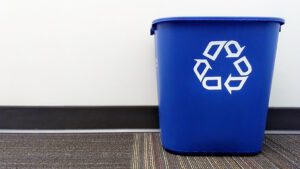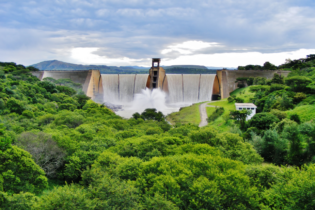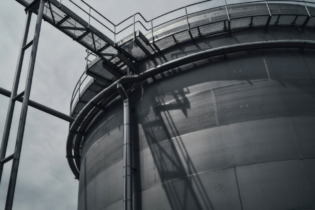The V&A Waterfront has reaffirmed its commitment to lessening the impact of plastics on the environment.
The V&A Waterfront is signing up to the SA Plastics Pact, as well as hosting a new research study with restaurants in the precinct on ways to eliminate harmful plastics. The Plastics Pact aims to change the way plastic packaging and products are designed, used and reused. This is to ensure that plastics are valued and not regarded as cheap and easily disposable waste. Petro Myburgh, senior manager: Custodial Services, V&A Waterfront, says that joining the SA Plastics Pact is one more step the Waterfront is taking in its efforts to be “a neighbourhood free of single-use plastics” and to be a world leader in systems-based circular design and innovative plastic waste management practices. The V&A precinct, as a sea-facing property, sees at first-hand the amount of waste – particularly plastics – that pollutes the ocean and shoreline, notes Myburgh. In partnership with Ocean Pledge, the Waterfront is due to launch a research study involving five tenant restaurants in its food court area, where most of the property’s single-use plastics are found. The goal is to try to eliminate the most harmful of it while implementing a campaign that encourages a shift in consumer behaviour. “Similar programmes in the US showed the potential annual cost saving per restaurant of around R57 000 and 891 kg of plastic,” says Diony Lalieu of Ocean Pledge. The project hopes to realise a quarter of a million rand in savings between the participating restaurants, while removing a significant amount of plastics and creating a blueprint for food courts in other shopping malls to follow. Recent statistics show that, globally, at least 8 million tonnes (Mt) of plastics end up in the world’s oceans annually, constituting a mammoth 80% of all sea debris. Among the most common items are shopping bags, coffee cups and lids, straws, water bottles, earbuds, sweet wrappers, and takeaway containers. South Africa generates 2.4 Mt of plastic waste annually, or 41 kg per person per year. The global average is 29 kg. While 70% of plastics waste generated is collected, only around 14% is recycled. A total of 3%, or 79 000 t, leaks directly into the environment, where it results in the ingestion, suffocation and entanglement of marine species. “We know that a total of 94% of waste on South African beaches is plastics, with 77% being single-use plastics,” says Lalieu. Recovery and recycling at V&A At the V&A, a dedicated team of more than 90 people collects, handles and sorts all the waste on the property at the V&A’s Waste Recovery and Recycling Centre. There are 384 collection points on-site and 550 bins are cleared twice a day. In 2021, the team collected over 4 300 t of waste and managed to divert 36%, or 1 540 t, from landfill through recycling and composting. Of this, 26 t of waste came from the waterways alone. Plastics make up an estimated 20% of all waste collected in the Waterfront. Myburgh says: “Close to 15% of all recycled waste at the V&A is plastic – and in 2017, the V&A Waterfront made a public commitment to eliminate single-use plastics across the property. This has helped us turn the tide against plastics through active engagement with tenants to recycle.” An innovative example of plastics recycling was the Waterfront’s use of eco-bricks in the construction of The Ridge, now home to the regional offices of Deloitte. Approximately 12 500 two-litre plastic bottles were stuffed with waste such as chip packets, candy wrappers and plastic shopping bags. The eco-bricks were then used as void fillers in certain foundation areas to reduce the amount of concrete that would otherwise have been needed. The initiative was a first for a large commercial building. Two Oceans Aquarium and Turtle Rescue and Rehabilitation ProgrammeA key driver of ocean sustainability is the V&A-owned Two Oceans Aquarium Education Foundation, a non-profit and public benefit organisation established just prior to the 2020 Covid-19 lockdown.
Under Ann Lamont, executive chair and head: Ocean Cluster at the V&A Waterfront, the foundation’s team runs the Turtle Rehabilitation and Marine Wildlife Management programmes, as well as other well-established and respected marine science education programmes that monitor the health and quality of the waters of the Waterfront canals, marina and basins. The sea turtle rescue and rehabilitation programme has been running for almost a decade and attained global fame with Yoshi, an injured turtle who was rehabilitated and released into the wild 20 years after her rescue. Turtles of all sizes and subspecies are brought to the Two Oceans Aquarium by rescue groups. These turtles often require long-term treatment and care, especially those who have ingested plastics while out at sea. The Two Ocean’s Aquarium Education Foundation and the V&A Waterfront for plastics-free July, will be offering their tenants an exclusive behind-the-scenes experience enabling tenants to learn about plastics while experiencing the turtle rescue programme. Marine Wildlife Management Programme Seals and other marine animals are regular visitors to the Waterfront, and even whales and dolphins are sometimes spotted in the harbour. With funding and support from the V&A Waterfront, the Two Oceans Aquarium Education Foundation formalised the Marine Wildlife Management Programme to reduce conflict between marine wildlife, shipping and other activities, and to minimise injuries to wildlife in the harbour through education. In 2020, the programme disentangled 42 seals and responded to 178 wildlife call-outs for marine wildlife rescues and checks. SOLVE SOLVE, the V&A’s innovation hub set up to address key global challenges but, at a localised level, is exploring ways to drive the V&A’s vision of a cleaner and healthier precinct. This includes data analysis and a portal to allow tenants to see their own waste data, as well as to monitor the overall waste data of the precinct. Tenants will also be provided with information programmes, including training related to the how and why of waste management. The V&A will also support plastic accelerator programmes as part of the plastics value chain, with SOLVE creating space for the testing and prototyping of new and less harmful plastics. Lamont, also head of SOLVE, adds that the V&A was committed to creating a dedicated plastics ‘circularity lab’, as well as showcasing retailers upcycling goods. Recycled materials are also being used in the development and construction of commercial buildings, as is happening with the construction of the Portswood food kiosk, where the goal is to achieve a net-zero carbon structure. Lamont concludes: “All of us need to find ways within our sphere of influence and operation to see how and where we can reduce our plastic wastage and prevent this from entering our ocean systems.” To date, the V&A Waterfront has been awarded a total of 12 Green Star ratings from the Green Building Council South Africa, elevating the precinct still further as a benchmark for environmentally responsible development.







